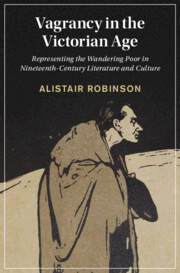 Vagrancy in the Victorian Age
Vagrancy in the Victorian Age Book contents
- Vagrancy in the Victorian Age
- Cambridge Studies in Nineteenth-Century Literature and Culture
- Vagrancy in the Victorian Age
- Copyright page
- Dedication
- Contents
- List of Illustrations
- Acknowledgements
- Introduction
- Part I The Country
- Part II The City
- Chapter 3 Casual Paupers
- Chapter 4 Loafers
- Part III The Frontier
- Afterword: London 1902
- Bibliography
- Index
- Cambridge Studies in Nineteenth-Century Literature and Culture
Chapter 4 - Loafers
from Part II - The City
Published online by Cambridge University Press: 02 November 2021
- Vagrancy in the Victorian Age
- Cambridge Studies in Nineteenth-Century Literature and Culture
- Vagrancy in the Victorian Age
- Copyright page
- Dedication
- Contents
- List of Illustrations
- Acknowledgements
- Introduction
- Part I The Country
- Part II The City
- Chapter 3 Casual Paupers
- Chapter 4 Loafers
- Part III The Frontier
- Afterword: London 1902
- Bibliography
- Index
- Cambridge Studies in Nineteenth-Century Literature and Culture
Summary
Vagrant ‘loafers’ were a preoccupation of novelists and social reformers who saw them as emblematic of social and racial decline during the 1880s and 1890s. This chapter first examines the articles and book-length reports that sought to define and solve the problems of unemployment, inefficiency and vagrancy. These were underwritten by theories of degeneration, social Darwinism and eugenics, ideas that ensured that the vagrant poor were increasingly characterised in ‘scientific’ terms as a biological threat to society and the white ‘imperial’ race. The second half of the chapter examines how this anxiety was expressed in the slum fiction of Arthur Morrison and Margaret Harkness, and in particular how the portrayal of loafers in slum novels and social investigations shaped H. G. Wells’s first dystopia, The Time Machine (1895). Although the influence of social investigation has been noted, Wells’s engagement with the slum novel, and what he perceived to be its failings, has hitherto been overlooked.
Keywords
- Type
- Chapter
- Information
- Vagrancy in the Victorian AgeRepresenting the Wandering Poor in Nineteenth-Century Literature and Culture, pp. 130 - 160Publisher: Cambridge University PressPrint publication year: 2021
